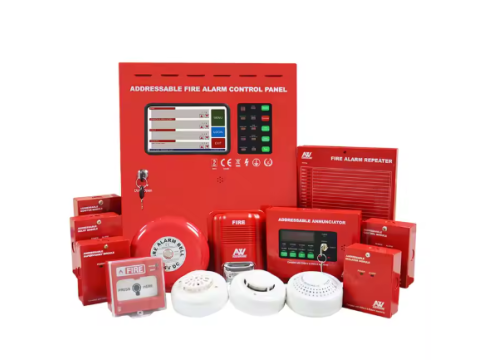WHAT DOES AFAS MEAN?
AFAS stands for Automatic Fire Alarm System—a safety system that detects fires and alerts building occupants automatically, without manual intervention.
But let’s keep it real—these systems need regular maintenance to stay functional and reduce false alarms. So, while AFAS can operate without much human involvement, it still needs trained people to keep it running smoothly.
WHY INSTALL AN AFAS?
Installing an automatic fire alarm system offers several critical benefits:
Early Fire Detection
Spotting fires in their early stages helps to respond faster, often preventing larger disasters.Evacuation and Notification
AFAS works hand-in-hand with emergency notification systems to alert people during the first signs of a fire. This reduces risks to health and minimizes severe consequences.Property Damage Control
Extinguishing a fire early means lower repair costs. Some systems can even integrate with fire suppression units to slow down the fire until emergency responders arrive.Integrated Building Management
AFAS often links with other building systems like:- Ventilation and smoke removal.
- Elevator controls.
- Access management systems.
This creates a seamless safety net, ensuring maximum protection during emergencies.
DESIGNING AND INSTALLING AFAS
Design and installation follow strict U.S. standards, with specifications depending on the building's layout, purpose, and fire risk. Key design factors include:
- Type of system (e.g., wired or wireless, addressable or threshold-based).
- Detector types: smoke, heat, flame, gas, or multi-sensor.
- Power supply and integration with other safety systems.
Installation must be handled by licensed professionals using certified equipment. Once installed, systems undergo a thorough commissioning process, with detailed documentation of all work performed.
MAINTAINING YOUR AFAS
To keep your AFAS reliable:
- Assign trained staff to monitor and manage the system.
- Perform daily functionality checks and document results.
- Schedule regular maintenance with licensed technicians, including cleaning sensors and verifying electrical parameters.
HOW DOES AN AFAS WORK?
An AFAS includes these main components:
- Detectors: These sense fire-related conditions like smoke, heat, or flames.
- Control Panels: The system's brain, processing signals and triggering alerts.
- Power Supply: Ensures 24-hour operation, with backup batteries lasting at least 3 hours during alarms.
- Additional Modules: Indicators, relays, and interface converters for integration.
The system works by detecting changes (e.g., temperature spikes, smoke density), transmitting data to the control panel, and executing pre-set safety protocols.
TYPES OF AFAS
- Threshold Systems
- Basic and cost-effective, but limited in precision.
- Ideal for small buildings with moderate fire risks.
- Addressable Systems
- Assign unique IDs to each detector for pinpointing fire locations.
- Offer enhanced diagnostics and real-time updates.
- Addressable-Analog Systems
- Continuously monitor environmental changes, providing early alerts while minimizing false alarms.
- Wired vs. Wireless Systems
- Wired: Reliable communication but harder to install.
- Wireless: Easier setup but more maintenance (e.g., battery changes).
CHOOSING THE RIGHT AFAS
Deciding which system to install depends on your building’s size, function, and fire risk. At the design stage, certified professionals evaluate these factors to recommend the best solution.
BOTTOM LINE
Automatic Fire Alarm Systems are a cornerstone of modern safety. From protecting lives to reducing property damage, their value is undeniable.
For reliable fire alarm solutions tailored to your needs, visit safsale.com—your trusted source for top-tier safety systems!

